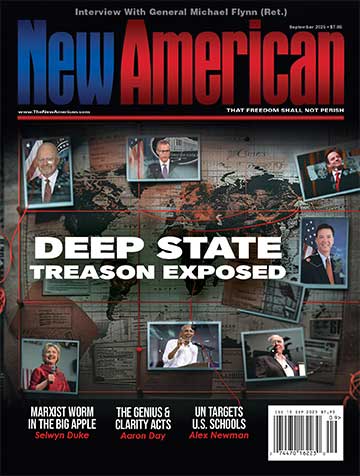The initiative ordered agencies to review regulatory procedures and ensure that all rules "promote predictability and reduce uncertainty" and "identify and use the best, most innovative, and least burdensome tools for achieving regulatory ends."
But the Washington Times observed that during the past several months, the President’s edict has gone nowhere:
Since that order, more than seven months ago, the administration has repealed only one rule — a rule that effectively treated spilled milk like an oil spill. By contrast, since the start of the year, the administration has proposed more than 340 regulations at a cost of more than $65 billion to job creators. It is important to note that these are only the regulations for which the administration actually conducted an economic analysis. For hundreds more, it has regulated blindly, with no cost or job numbers associated with its rules.
During President Obama’s recent Midwest bus tour he suggested that "there is some red tape that needs to be cut, and we should cut it." But Don Seymour, writing on House Speaker John Boehner’s blog, claims the President has done nothing to embrace House-passed bills that rein in excessive government regulations: "The House passed legislation to stop the EPA from imposing a national energy tax, prevent a government takeover of the internet, repeal ObamaCare (with its job-crushing mandates and penalties), and more" — none of which Obama has supported.
Further, two new rules have been finalized this month by the Environmental Protection Agency (EPA) that will increase the regulatory burden on job producers by nearly $10 billion. The first is called the "transport rule," which regulates emissions by reducing sulfur dioxide and nitrogen oxide output from utility companies.
Sen. James Inhofe (R-Okla.) insists that the transport rule "could force the retirement of 30 to 100 gigawatts of coal-fired power plants, raise the price of electricity by as much as 23 percent, and cause 1.4 million job losses by 2020." Even the EPA admits the new rule would pile another $2.7 billion regulatory burden on the private-sector.
The second rule will enact new emissions standards and fuel economy requirements for all medium- and heavy-duty trucks built between 2014 and 2018, which federal officials believe will save 530 million barrels of oil and reduce fuel consumption for some models by up to 20 percent by 2018.
Sen. John Barrasso (R-Wy.) wrote in the Washington Times:
The second rule is literally unprecedented. It is the first-ever rule released that regulates mileage for medium- and heavy-duty trucks. This is a costly move that adds complexity, and the impact will be broad-based. Regulating these vehicles will affect small businesses, cities and towns that purchase emergency vehicles such as fire trucks and ambulances, and recreational vehicle owners. Everything from delivery vans to full-size pickups to even school busses will be hampered by these new environmental requirements. At a time when building strong, safe vehicles in America should be a priority, these new regulations are making it harder.
Under this rule, consumers will end up paying $1,000 more for every medium- to heavy-duty truck. The total cost of the rule is $8.1 billion. It would be nice if we knew what effect this would have on American jobs. The EPA conveniently forgot to do an analysis of the jobs impact of this rule. A little common sense tells us this means the rule is bad news for already struggling American manufacturing jobs.
Further, Sen. Barrasso warns that the "single most expensive environmental regulation in history" is on the horizon: the EPA’s ozone rule, which is estimated to cost nearly $1 trillion. Though the rule has been delayed, Barrasso says it is critical that it be abolished.
Now, President Obama is planning a second attempt at regulatory reform: The White House announced Tuesday it will amend up to 500 different regulations that have in some way impeded private-sector growth.
"The president has directed agencies to give careful consideration to both benefits and costs, to promote public input and listen to stakeholders, to simplify and harmonize rules, to select approaches that promote innovation, and to consider flexible approaches that reduce burdens and maintain freedom of choice," Cass Sunstein, Obama’s regulatory czar, wrote in a Wall Street Journal op-ed.
Sunstein suggests that the reform measures will save $10 billion over the next five years, as well as creating new jobs in the private sector. But business leaders are skeptical of the President’s initiative:
"The administration’s findings and determinations, on their own, are a worthy effort at making technical changes to the regulatory process, but the results of this lookback will not have a material impact on the real regulatory burdens facing businesses today," Bill Kovacs, vice president of environment, technology and regulatory affairs for the U.S. Chamber of Commerce, wrote on the Chamber’s website. "The bottom line is that real regulatory reform would include permit streamlining; requiring transparency in the permitting process so we know exactly which permits are being held up and why; … and finally by mandating that federal agencies apply all the laws Congress passed relating to regulatory reform, including data quality, regulatory flexibility and unfunded mandates."
Indeed, critics suggest that Obama’s indolent track record of implementing regulatory reform is nothing short of underwhelming. "The administration just unveiled a plan for publicity, not a plan for growth," Sen. Barrasso asserted. "Cutting $10 billion in regulatory costs over five years is a drop in the bucket. In July alone, the administration proposed over $9.5 billion in new regulatory costs."
House Majority Leader Eric Cantor echoed Barrasso’s remarks: "Speeches and editorials are not enough to help real job creators in America.… Action is needed."




